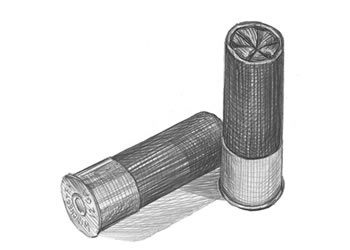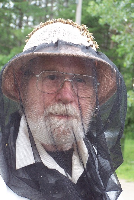

 The Accurate Reloading Forums
The Accurate Reloading Forums  THE ACCURATE RELOADING.COM FORUMS
THE ACCURATE RELOADING.COM FORUMS  Guns, Politics, Gunsmithing & Reloading
Guns, Politics, Gunsmithing & Reloading  Shotshell Reloading
Shotshell Reloading  New to shotshell, need some advice
New to shotshell, need some adviceGo  | New  | Find  | Notify  | Tools  | Reply  |  |
| new member |
I have been loading pistol and rifle for a few years, and just picked up a MEC Sizemaster the other day. In looking at the load data, they are a lot more specific than with centerfire reloading. When it lists a certain primer, do you have to use that primer, or can you substitute any primer for that one? Same thing with wads and hulls. Help! | ||
|
| One of Us |
Have fun. Shotshell reloading is a bit more "art" than "science" Supposedly you can choose to utilize a "less hot" primer in substitution for a more brissant one, but I would just use what is called for. I don't sweat it with standard trap loads, but for hunting loads or for slug/buckshot, be exact. You need to use the correct hull (and this is pretty specific, old winchester AA hulls are not the same as what they sell now...) This is very important as the internal case geometry makes a huge difference as to what pressure you will get. Some loads are not that big of a deal, as you can find low end trap loads that all utilize the same powder charges, wad, and shot volume, but will need to have the press reset for proper crimping between hull types. While there are some wads that are substitutions, they are marked that way. The various claybuster, et al are examples. The wad column is also a big determinant for pressure. You can add or subtract the various felt/fiber spacer wads as you see fit to make the crimp right, but don't substitute the plastic wad or you can have major problems. Also, do not add buffer without the load recipe calling for it. Also, as an FYI, you don't need to be as hyper accurate with weighing charges with shotgun. I believe that one of the older manuals said something about 10% error being OK. I don't go that far, but it is impossible to get the shot charges to agree to +/- 5-10 grains without hand weighing, and even then depending on shot size you might not make it. | |||
|
one of us |
Do your self a favor and buy a lyman shot shell reloading manual. Those charts that come with the mec reloaders don't take into account some of the stuff they list isn't stocked in every location of the country. I use a clay buster wad in several different hullswith the same powder charges. Remington club hulls are so easy to find at the sportsman club I can't resist taking all that the guys are planing on throwuing away. They load and shoot just as well as the SXT's and Nitros. Garden View Apiaries where the view is as sweet as the honey. | |||
|
| new member |
Thanks guys, appreciate it! I have found a few recipes for the shot I want to reload that has all the components that my local shop has instock, except for the primers. For some reason they do not carry the Win 209 primers, just the CCI 209. Are they equivalent? | |||
|
| One of Us |
No, they are not equivalent. Look around a bit and you will probably find a load if it is a trap type load. The internet is a good source to double check with- check your powder manufacturer's site and the wad manufacturer's site and you should find something. CCI has 2 different primers, a magnum and a standard. The standard is one of the less brissant primers, the magnum one of the more. Winchester traditionally has been one of the hotter ones also. The Lyman book is a good one, as is reloading for shotgunners. If worst comes to worst, contact the powder manufacturer via their web site and they will tell you if its OK in their opinion. | |||
|
| one of us |
As mentioned do yourself a favor and pick up a Lyman's 5th Edition Shotshell Reloading Guide. Read the "How to Section" and all will become clear. Unlike metalic reloading, shotshell data is to be followed as written, loads are not "worked up". Unlike rifle or pistol loads, shotshells do not always show signs of excess pressure as the working pressure for shotguns is far lower than metalic cases. Substitutions of components in some cases can cause pressure to change with bad results. Always check your powder drops with a scale as seldom does a bushing drop as the charts specify. As stated powder is dropped on volume and values +/- .2g are not unexpected. There are "clone" wads out there that are knock offs of the origional and can be substituted - check the manufacture's label. Make it easier on yourself and stick to one brand of hull so you do not have to keep changing components. Shotshell Data can be found on both Hodgdon's & Alliant's web sites. Questions....feel free to ask, lots of experence here to help out. | |||
|
| One of Us |
This is good info. | |||
|
| one of us |
Shotshell working pressures are so low compared to proof loads and the ability of MODERN shotguns to handle normal pressures that REASONABLE (and by reasonable, I mean different brands of primers or wads, NOT powder or hulls, unless specifically designed to be substituted, many loads are wad specific because of volume)substitution of components is not going to create a problem (but it may degrade your pattern), and that certainly includes primers in less than max pressure loads. If you drop 30 grains of Bullseye instead of some slow burning powder in a hunting load you're almost certainly going to have the gun come apart. BY FAR, THE MOST IMPORTANT SAFETY FACTOR IS USING THE CORRECT POWDER. Second would be using approximately the correct weight of the correct powder. AFA weighing loads goes, I assume the above poster means to weigh what a specific bushing drops a few times during your loading process to be sure it is near what you desire. A tenth grain or two or even three tenths is relatively insignificant. Once your powder column has settled and your loading procedure is more or less standardized, the powder drop will be quite consistent, assuming you have your machine reasonably anchored. Don't misunderstand, I'm not suggesting switching primers is a good idea, what I am stating is that if you need to load some loads for tomorrow's opening, or whatever and you don't have the primer specified on hand, then loading with another primer is not going to create a problem. Some hunting loads specify hotter primers to light the larger amounts of slower burning powders so you really can't cause a problem. Once you load a while, it becomes clearer what is acceptable and what isn't. Following the loading recs from a reputable manual is always the best idea.Generally speaking the Fed 209A primer is the hottest and will raise pressure the most. Also don't assume that xyz load posted in abc's load suggestions will work, MOST of the time they will, sometimes they won't. And by work, I mean load, I've run into posted loads that won't fit into the hull or, on the opposite end, won't fill the hull and cause crimping problems. Also, generally speaking lower pressure and lower speed loads will give tighter patterns. USE PREMIUM (hard, ie higher antimony content shot)SHOT for maximum performance. For skeet ranges, for practice on the 16 yd line, any cheap shot will work. For serious longer range hunting or for tournaments use the best shot. With component costs these days, it is hard to avoid buying cheap promotional shells at Walmart or similar if you value your time at all AND if you're going to use them for practice, formal or informal. xxxxxxxxxx When considering US based operations of guides/outfitters, check and see if they are NRA members. If not, why support someone who doesn't support us? Consider spending your money elsewhere. NEVER, EVER book a hunt with BLAIR WORLDWIDE HUNTING or JEFF BLAIR. I have come to understand that in hunting, the goal is not the goal but the process. | |||
|
| One of Us |
flight doc, check the Hodgdon and Alliant web site and visit their reloading data section. You will find a lot of loads with different primers. I use Fiocchis and they are close enough to substitute for Winchester 209's. Those sites also will give you loads for Fiocchis. | |||
|
| Powered by Social Strata |
| Please Wait. Your request is being processed... |
|
 The Accurate Reloading Forums
The Accurate Reloading Forums  THE ACCURATE RELOADING.COM FORUMS
THE ACCURATE RELOADING.COM FORUMS  Guns, Politics, Gunsmithing & Reloading
Guns, Politics, Gunsmithing & Reloading  Shotshell Reloading
Shotshell Reloading  New to shotshell, need some advice
New to shotshell, need some advice

Visit our on-line store for AR Memorabilia

